Volunteers on the Go - Part III
Welcome to the third edition in the series "Volunteers on the Go". Two of our activities that were on hold due to the pandemic are now back on line (with Covid-19 protocols): the bi-weekly water sampling at the Orange Bridge in Parksville that we do for Environment and Climate Change Canada (ECCC); and the Forage Fish Spawning Habitat sampling we do monthly (sometimes biweekly) in partnership with Vancouver Island University (VIU) and the Mount Arrowsmith Biosphere Region Research Institute (MABRRI).
Water Sampling at the Orange Bridge
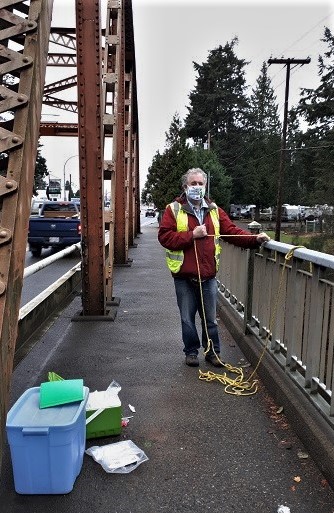
The Orange Bridge spans the Englishman River in Parksville and is one of several long-term freshwater quality monitoring sites in the coastal watersheds of British Columbia. MVIHES has been collecting water samples from the Englishman River at this location and sending them to an analytical laboratory on behalf of ECCC for approximately 15 years. ECCC uses the data to assess water quality status and long-term trends, detect emerging issues, establish water quality guidelines and track the effectiveness of remedial measures and regulatory decisions in the Pacific Basin.
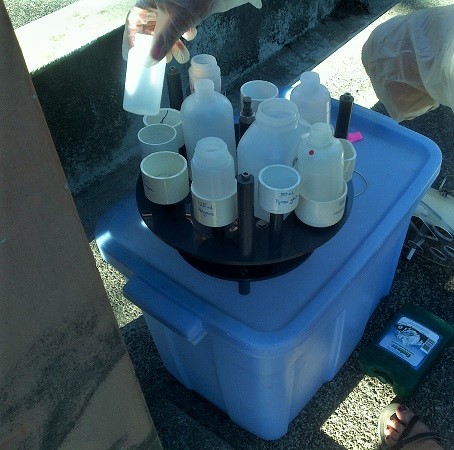
ECCC supplies MVIHES with bottles that are placed in a rack (seen in right-hand photo) and lowered by a rope into the Englishman River for filling. Each bottle in the rack is used for analysis of specific parameters such as heavy metals, E. coli, nitrogen, chloride, water hardness, turbidity. Once the bottles are filled they are packed into a cooler with cold packs that ECCC also supplies and sent to a lab in Burnaby for analysis. The results of the analysis are sent to ECCC and go into a public database.
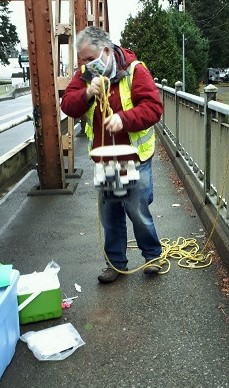
The photo to the left shows actor and heart throb Mark Ruffalo on the Orange Bridge after he has lifted the sampling rack out of the river. No wait.....that's MVIHES volunteer and Board Member Bernd Keller! Yay Bernd! It's so hard to tell who's behind the masks these days. Well, whoever it is, he's getting ready to take the bottles out of the rack, put the lids back on the bottles, and pack them in the cooler to be shipped to the lab in Burnaby. Taking the photo is MVIHES volunteer Shelley Goertzen.
Forage Fish Spawning Habitat Sampling
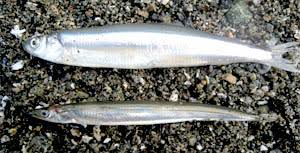 Since 2018, MVIHES has been identifying and sampling forage fish spawning habitat on the beaches from Craig Bay to the Parksville Community Park. Forage fish are small fish that travel in large schools and are a food source or 'forage' for larger fish and marine mammals and birds.They include Pacific Sand Lance (seen in bottom of photo) and Surf Smelt (seen in top of photo) which lay tiny eggs (1mm) on pebble and sand beaches just below the high-tide line - an area called the intertidal zone. It's important to identify and map beaches where forage fish spawn so spawning habitat can be protected from disturbance during the spawning window.
Since 2018, MVIHES has been identifying and sampling forage fish spawning habitat on the beaches from Craig Bay to the Parksville Community Park. Forage fish are small fish that travel in large schools and are a food source or 'forage' for larger fish and marine mammals and birds.They include Pacific Sand Lance (seen in bottom of photo) and Surf Smelt (seen in top of photo) which lay tiny eggs (1mm) on pebble and sand beaches just below the high-tide line - an area called the intertidal zone. It's important to identify and map beaches where forage fish spawn so spawning habitat can be protected from disturbance during the spawning window.
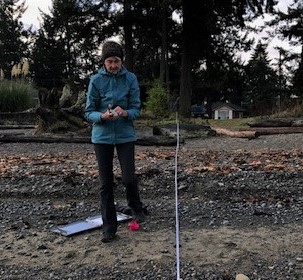
On November 10, MVIHES volunteers, including Brenda Little in the right-hand photo, collected habitat data and sand samples from 11 potential spawning sites. The sand samples, one of which is seen in the left-hand photo below, are sieved and "vortexed" to sort out the right sized sand grains where forage fish eggs and embryos can be found. The sorted sand from each site is placed in a sample bottle with a tag and checked under a microscope by VIU and MABBRI for the presence of eggs and embryos. In December of 2018 and 2019, Pacific Sand Lance eggs were found in the sand samples from the beach in San Pareil.
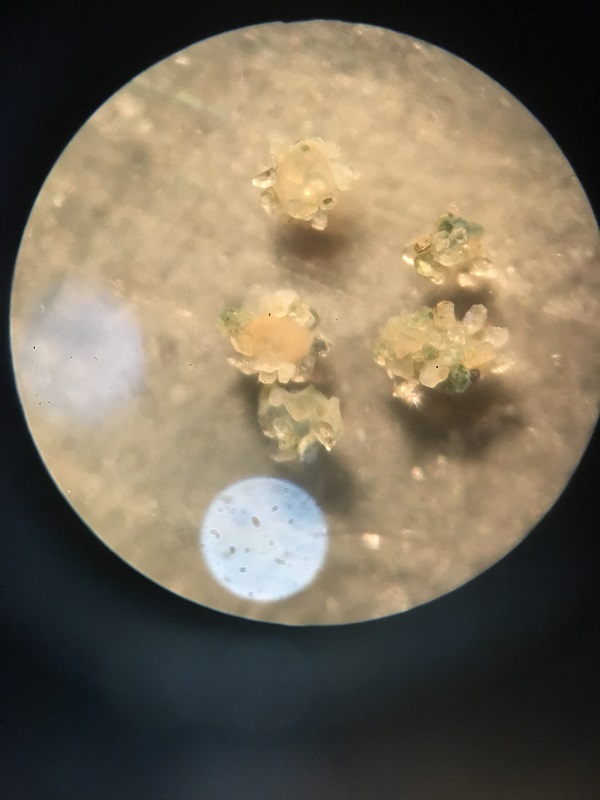
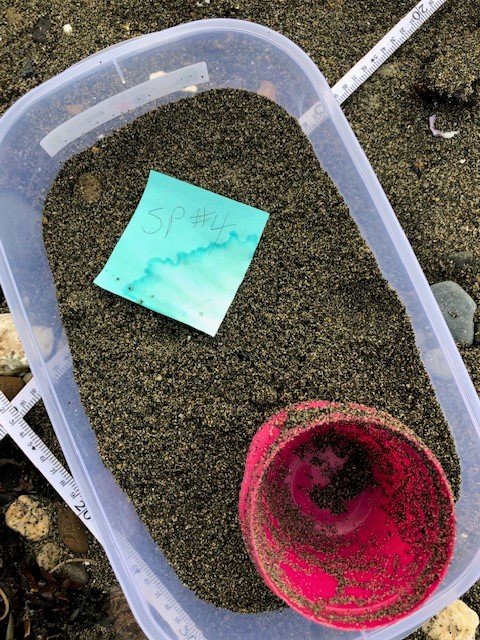
This time it appears Pacific Sand Lance eggs have been found on the beach in the Parksville Community Park. The photo to the right was taken through a microscope by MABRRI and shows five eggs attached to sand particles. The eggs are being sent to an expert with the Dept. of Fish and Game in Washington State for verification.
Other volunteers who were involved on November 10 and are suspiciously absent in all the photos taken that day are Don Lyster, Pat Ashton, Katrice Bauer, Shelley Goertzen, Peter Law and the Vortex Queen (Barb Riordan).